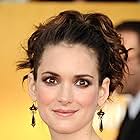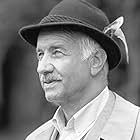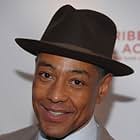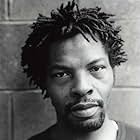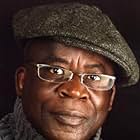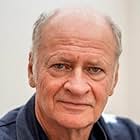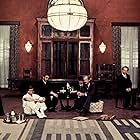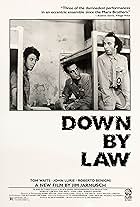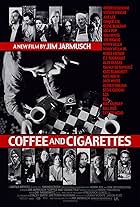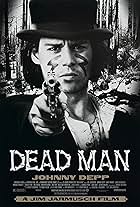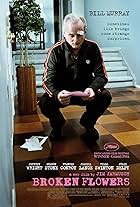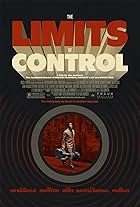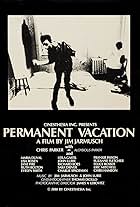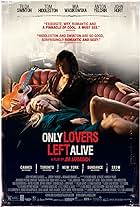An anthology of 5 different cab drivers in 5 American and European cities and their remarkable fares on the same eventful night.An anthology of 5 different cab drivers in 5 American and European cities and their remarkable fares on the same eventful night.An anthology of 5 different cab drivers in 5 American and European cities and their remarkable fares on the same eventful night.
- Awards
- 1 win & 1 nomination
Alan Randolph Scott
- Rock Musician #1 (segment "Los Angeles")
- (as Alan Randolph Scott I)
Pascal N'Zonzi
- Passenger #1 (segment "Paris")
- (as Pascal Nzonzi)
Emile Abossolo M'bo
- Passenger #2 (segment "Paris")
- (as Émile Abossolo-M'bo)
Stéphane Boucher
- Man in Accident (segment "Paris")
- (as Stephane Boucher)
- Director
- Writer
- All cast & crew
- Production, box office & more at IMDbPro
Storyline
Did you know
- TriviaThe production hired a stunt driver to maneuver the tiny Fiat cab around a hairpin turn for one of the exterior shots in Rome. The turn was so tight that the stunt driver couldn't manage it, even after several takes. Roberto Benigni asked if he could try it and pulled it off perfectly on the first take.
- GoofsThis film takes place sometime during the winter, and the opening story takes place in Los Angeles starting at 7:07 p.m. At no time during the winter would Los Angeles be this sunny at 7:07 p.m. The latest time of day the sun would set during the winter would be at 6:07 p.m. on March 20, the last day of winter. (March 20 now occurs during Daylight Saving Time, but, in 1991, DST did not begin until April.)
- Quotes
Paris Driver: Don't blind people usually wear dark glasses?
Blind Woman: Do they? I've never seen a blind person.
- Crazy creditsDuring the end credits, the titles of the crew members are in the language of the place/unit they worked in (ie the Helsinki unit's credits are in Finnish, and so on).
- SoundtracksBack in the Good Old World
Written by Tom Waits and Kathleen Brennan
Produced by Tom Waits
Arranged by Tom Waits and Francis Thumm
Jalma Music, Inc.
Administered by Ackee Music, Inc. (ASCAP)
Tom Waits performs courtesy of Island Records, Inc.
Featured review
In the early 90's Jarmusch delivered this charmer, a movie that unites America and Europe through one single topic, yet shows very different versions of it.
At probably the exact same moment people around the globe get into taxis. A stylish Hollywood casting agent mounts a cab in L.A., in New York it's a hapless poor man trying to get home, in Paris we encounter a blind woman, in Rome a priest and in Helsinki a bunch of drunks will tell their story. Yes, indeed. Stories are told, because each episode is an encounter with the respective cabbie, who all have a life and a past of their own.
Wynona Ryder's performance of the 20-year-old, chain-smoking taxi driver does not work very well and also makes for the least interesting story. But Armin Müller-Stahl as an East-German refugee and former clown, who is awe-struck and belittled by the bustling NYC around him makes up for a lot. His helplessness when trying to communicate with his passenger, played by Giancarlo Esposito, almost becomes tangible when it manifests in his complete inability to steer the taxi. Within very few minutes the two men develop an utterly deep and good-humored trust and friendship between them. I'd call it the funniest portion of the movie, but in Rome we encounter Roberto Benigni as an always talking, sex-obsessed cabbie. His is the story we get the least emotional or intellectual outcome from, but, hey, welcome to the Benigni Show! If you are open-minded enough to laugh about a few surprises in the field of sexual experimentation (which we don't see but only hear described without too much detail), this one will stay with you as one of the brightest twenty minutes in your life. Before Rome we visit Paris with the most mysterious, yet most catching segment, a curious story about the afore-mentioned blind woman and a black cab driver, who - we can't be sure - might be going blind himself (he's very short-sighted and therefore has problems with driving his taxi) and has a lot of questions to ask. The woman, however, is not interested in conversation, yet we get the impression she opens up more than the driver realizes. In Helsinki a group of drunks tell the story of their sleeping friend's worst day. The cab-driver listens to it. It's a terrible story about a horrible predicament and the poor fellow's life basically lies in ruins. And yet the cabbie tops the story with one of the saddest things you'll ever have heard.
The concept of the movie thinks of night as a place rather than a time, because all of the stories begin at the same moment in time but in different time zones. We move east in the process of the film and so we experience sunset in Los Angeles and early morning in Helsinki. Each of these times lends a special atmosphere to the story it tells, which becomes the most effective in the Helsinki story, which is utterly sad, however ends with a new day starting. People leave their places and go about their lives - the world moves on, none of the stories has an ending, life for each of the characters (except one) will continue.
What's so great about this movie is that it tells such different stories with such different characters who all have different pasts and intentions, each accommodating the place of action (even visually - in L.A. even the buildings appear to be candy-flavored, while in Helsinki the city is cold, drab, yet hopeful) and it all comes together to this huge picture, which reminds us that we are all different but all live on the same planet and know similar things about life, death and everything in-between. I wonder what this movie would have been like, if Jarmusch had also considered taxis in non-western countries.
I highly recommend this movie to anyone who... Oh, blast! I recommend this movie to everyone.
At probably the exact same moment people around the globe get into taxis. A stylish Hollywood casting agent mounts a cab in L.A., in New York it's a hapless poor man trying to get home, in Paris we encounter a blind woman, in Rome a priest and in Helsinki a bunch of drunks will tell their story. Yes, indeed. Stories are told, because each episode is an encounter with the respective cabbie, who all have a life and a past of their own.
Wynona Ryder's performance of the 20-year-old, chain-smoking taxi driver does not work very well and also makes for the least interesting story. But Armin Müller-Stahl as an East-German refugee and former clown, who is awe-struck and belittled by the bustling NYC around him makes up for a lot. His helplessness when trying to communicate with his passenger, played by Giancarlo Esposito, almost becomes tangible when it manifests in his complete inability to steer the taxi. Within very few minutes the two men develop an utterly deep and good-humored trust and friendship between them. I'd call it the funniest portion of the movie, but in Rome we encounter Roberto Benigni as an always talking, sex-obsessed cabbie. His is the story we get the least emotional or intellectual outcome from, but, hey, welcome to the Benigni Show! If you are open-minded enough to laugh about a few surprises in the field of sexual experimentation (which we don't see but only hear described without too much detail), this one will stay with you as one of the brightest twenty minutes in your life. Before Rome we visit Paris with the most mysterious, yet most catching segment, a curious story about the afore-mentioned blind woman and a black cab driver, who - we can't be sure - might be going blind himself (he's very short-sighted and therefore has problems with driving his taxi) and has a lot of questions to ask. The woman, however, is not interested in conversation, yet we get the impression she opens up more than the driver realizes. In Helsinki a group of drunks tell the story of their sleeping friend's worst day. The cab-driver listens to it. It's a terrible story about a horrible predicament and the poor fellow's life basically lies in ruins. And yet the cabbie tops the story with one of the saddest things you'll ever have heard.
The concept of the movie thinks of night as a place rather than a time, because all of the stories begin at the same moment in time but in different time zones. We move east in the process of the film and so we experience sunset in Los Angeles and early morning in Helsinki. Each of these times lends a special atmosphere to the story it tells, which becomes the most effective in the Helsinki story, which is utterly sad, however ends with a new day starting. People leave their places and go about their lives - the world moves on, none of the stories has an ending, life for each of the characters (except one) will continue.
What's so great about this movie is that it tells such different stories with such different characters who all have different pasts and intentions, each accommodating the place of action (even visually - in L.A. even the buildings appear to be candy-flavored, while in Helsinki the city is cold, drab, yet hopeful) and it all comes together to this huge picture, which reminds us that we are all different but all live on the same planet and know similar things about life, death and everything in-between. I wonder what this movie would have been like, if Jarmusch had also considered taxis in non-western countries.
I highly recommend this movie to anyone who... Oh, blast! I recommend this movie to everyone.
- How long is Night on Earth?Powered by Alexa
Details
- Release date
- Countries of origin
- Official sites
- Languages
- Also known as
- LANewYorkParisRomeHelsinki
- Filming locations
- Production companies
- See more company credits at IMDbPro
Box office
- Budget
- $3,500,000 (estimated)
- Gross US & Canada
- $2,015,810
- Opening weekend US & Canada
- $34,039
- May 3, 1992
- Gross worldwide
- $2,113,387
- Runtime2 hours 9 minutes
- Color
- Aspect ratio
- 1.85 : 1
Contribute to this page
Suggest an edit or add missing content










